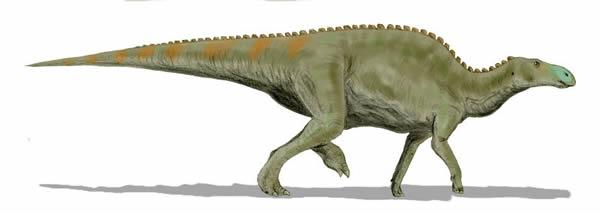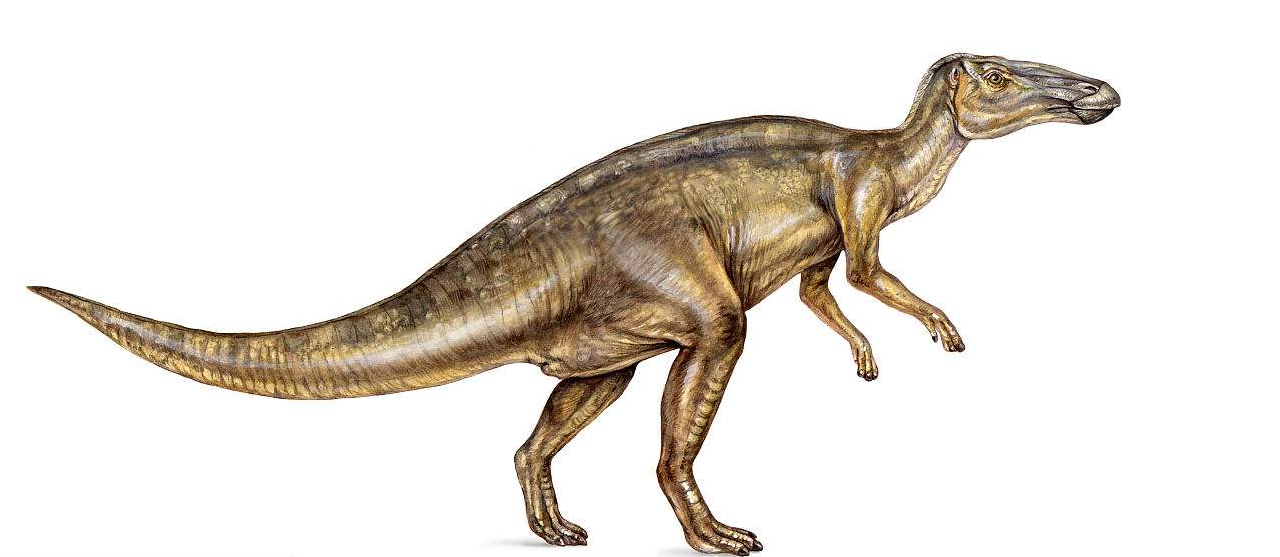Dinosaur Knowledge Tips Edmontosaurus
Release time:2017/11/27 10:19:00

Edmontosaurus ( ed-MON-tə-SAWR-əs) is a genus of hadrosaurid (duck-billed) dinosaur. It contains two known species: Edmontosaurus regalis and Edmontosaurus annectens. Fossils of E. regalis have been found in rocks of western North America that date from the late Campanian stage of the Cretaceous Period 73 million years ago, while those of E. annectens were found in the same geographic region but in rocks dated to the end of the Maastrichtian stage of the Cretaceous, 66 million years ago. Edmontosaurus was one of the last non-avian dinosaurs, and lived alongside dinosaurs like Triceratops and Tyrannosaurus shortly before the Cretaceous–Paleogene extinction event.
Edmontosaurus included some of the largest hadrosaurid species, measuring up to 12 metres (39 ft) long and weighing around 4.0 metric tons (4.4 short tons). Evidence does exist in the form of two fossilized specimens housed at the Museum of the Rockies for an even greater maximum size of 15 m (49 ft) and weighing 9.07 metric tons (10.00 short tons) for Edmontosaurus annectens. Several well-preserved specimens are known that include not only bones, but in some cases extensive skin impressions and possible gut contents. It is classified as a genus of saurolophine (or hadrosaurine) hadrosaurid, a member of the group of hadrosaurids which lacked large, hollow crests, instead having smaller solid crests or fleshy combs.
The first fossils named Edmontosaurus were discovered in southern Alberta (named after Edmonton, the capital city), in the Horseshoe Canyon Formation (formerly called the lower Edmonton Formation). The type species, E. regalis, was named by Lawrence Lambe in 1917, although several other species that are now classified in Edmontosaurus were named earlier. The best known of these is E. annectens, named by Othniel Charles Marsh in 1892; originally as a species of Claosaurus, known for many years as a species of Trachodon, and later as Anatosaurus annectens. Anatosaurus and Anatotitan are now generally regarded as synonyms of Edmontosaurus.
Edmontosaurus was widely distributed across western North America. The distribution of Edmontosaurus fossils suggests that it preferred coasts and coastal plains. It was a herbivore that could move on both two legs and four. Because it is known from several bone beds, Edmontosaurus is thought to have lived in groups, and may have been migratory as well. The wealth of fossils has allowed researchers to study its paleobiology in detail, including its brain, how it may have fed, and its injuries and pathologies, such as evidence for tyrannosaur attacks on a few edmontosaur specimens.

Edmontosaurus has been described in detail from numerous specimens. Like other hadrosaurids, it was a bulky animal with a long, laterally flattened tail and a head with an expanded, duck-like beak. The skull had no bony crest, unlike many other hadrosaurids, but bore a comb-like crest of skin and scales. The fore legs were not as heavily built as the hind legs, but were long enough to be used in standing or movement. Edmontosauruswas among the largest hadrosaurids: depending on the species, a fully grown adult could have been 9 metres (30 ft) long, and some of the larger specimens reached the range of 12 metres (39 ft) to 13 metres (43 ft) long. Its weight was on the order of 4.0 metric tons (4.4 short tons). Traditionally, E. regalis has been regarded as the largest species, though this was challenged by the hypothesis that the larger hadrosaurid Anatotitan copei is a synonym of Edmontosaurus annectens, as put forward by Jack Horner and colleagues in 2004, and supported in studies by Campione and Evens in 2009 and 2011. The type specimen of E. regalis, NMC 2288, is estimated as 9 to 12 metres (30 to 39 ft) long. E. annectens is often seen as smaller. Two mounted skeletons, USNM 2414 and YPM 2182, measure 8.00 metres (26.25 ft) long and 8.92 metres (29.3 ft) long, respectively. However, these are probably subadult individuals, and there is at least one report of a much larger potential E. annectens specimen, almost 12 metres (39 ft) long. Two specimens still under study in the collection of the Museum of the Rockies - a 7.6 m (25 ft) tail labelled as MOR 1142 and another labelled as MOR 1609 - indicate that Edmontosaurus annectens could have grown to larger sizes, possibly rivaling Shantungosaurus in size. The specimens of these individuals indicate a length of up to 15 m (49 ft), according to paleontologists. Such large individuals of Edmontosaurus would likely have been very rare due to such factors as environmental stress, disease, and predation.
from Wikipedia